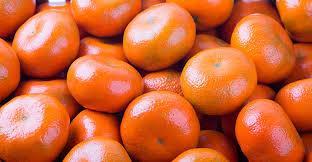Increase in mandarin production and exports in Peru this season
Peru
Friday 05 July 2024
VU
Mandarin production and exports in Peru will recover and increase by 2% and 3%, respectively, in the 2023-2024 season (March 2024 to February 2025), according to a new US Department of Agriculture (USDA) report. Production is projected to reach 560,000 tonnes and exports to reach 210,000 tonnes (photo: agroperu.pe).
Mandarin production and exports in Peru will recover and increase by 2% and 3%, respectively, in the 2023-2024 season (March 2024 to February 2025), according to a new US Department of Agriculture (USDA) report. Production is projected to reach 560,000 tonnes and exports to reach 210,000 tonnes.
The USDA expects higher productivity, driven by cooler temperatures and drier weather conditions, to have a positive impact on production and exports. Domestic consumption of fresh mandarins is estimated at 322,000 tonnes for the 2023-2024 marketing year, an increase of 3% from the previous year. The United States is expected to remain Peru's main export partner, accounting for 50% of exports.
Varieties
In 2023, Peru experienced a warmer autumn and winter, reducing flowering of early varieties by 50% compared to 2022. Expectations for late varieties (Tangelo, Tango, Orri and W. Murcott) are higher, with unaffected flowering and fruit set, and above average fruit volume.
Mandarin fields face challenges such as temperature and humidity changes, heavy rainfall and a warm winter from 2023. These factors have favoured the presence of four pests: Phyllocoptruta oleivora (citrus rust mite); Polyphagotarsonemus latus (broad mite); Panonychus citri (spider mite); and Prodiplosis longifila linked to Cladosporium spp. (sooty blotch). In addition, plant stress increases the likelihood of greasy spot (Mycosphaerella citri) infestation, especially in the south of the country.
According to official data, mandarin in Peru is produced in 13 of the 25 regions of the country. Coastal areas account for 60% of the total production, due to their semi-tropical climate and good water availability. The main producing areas are Lima, with 36% of the total production, Junín with 30%, and Ica with 20%.
fuente: fas.usda.gov, simfruit.cl





